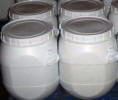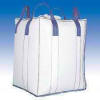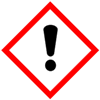| Anmol Chemicals is the pioneer manufacturers of Methyl isobutyl ketone, Pharmaceutical Excipients Fragrance & Flavor chemicals in India. We supply Halal and Kosher Methyl isobutyl ketone made in an ISO9001, ISO22000 (FSSC22000) and cGMP certified facility. Our group has several manufacturing facilities spread across the world, supported by toll manufacturers and representatives in UAE, Europe, Africa, USA, China and has several associated manufacturing facilities spread across India. All the Information on Physics, Chemistry, Applications, Uses and Technology on Manufacture of Methyl isobutyl ketone is in these pages. |
| The units have one or more of the certifications like FDA GMP, ISO 9001, ISO 22000, HACCP, REACH, Kosher & Halal |




Methyl isobutyl ketone SDS MSDS of Manufacturers
Methyl isobutyl ketone SDS of Manufacturers
Methyl isobutyl ketone or MIBK SDS, Safety Data Sheet
MSDS Sheet, Material Safety Data Sheet
1. Product Identification
Product Name & Other Names: Methyl isobutyl ketone or MIBK.
CAS No.: 108-10-1.
EINECS EC Number: 203-550-1
Molecular Formula: C6H12O or CH3COCH2CH(CH3)2
Molecular Weight: 100.16
FEMA number: 2731
Relevant uses and uses advised against (if any): Laboratory and Industrial Use.
2. Hazards Identification
GHS, Globally Harmonized System Classification in accordance with 29 CFR 1910
Classification according to Regulation (EC) No 1272/2008
Flammable liquids Category 2 - H225
Serious eye damage/eye irritation Category 2A - H319
Acute toxicity, inhalation Category 4 - H332
Specific target organ toxicity - single exposure Category 3, Respiratory system, H335
Labeling according GHS USA & Regulation (EC) No 1272/2008
GHS Label Elements  Flammable |
GHS Label Elements  Irritant |
Signal Words: Danger
Hazard Statements:
H225: Highly flammable liquid and vapor.
H319: Causes serious eye irritation.
H332: Harmful if inhaled.
H335: May cause respiratory irritation.
Precautionary Statements:
P210: Keep away from heat/sparks/open flames/hot surfaces – No smoking.
P240: Ground/bond container and receiving equipment.
P241: Use explosion-proof electrical/ventilating/light/…/equipment.
P242: Use only non-sparking tools.
P243: Take precautionary measures against static discharge.
P260: Do not breathe dust/fume/gas/mist/vapors/spray.
P264: Wash contaminated parts thoroughly after handling.
P270: Do not eat, drink or smoke when using this product.
P280: Wear protective gloves/protective clothing/eye protection/face protection.
P312: Call a POISON CENTER or doctor/physician if you feel unwell.
P301+P310: IF SWALLOWED: Immediately call a POSION CENTER or doctor/physician.
P303+361+353: IF ON SKIN (or hair): Remove/Take off immediately all contaminated clothing. Rinse skin with water/shower.
P333+313: If skin irritation or a rash occurs: Get medical advice/attention.
P370+378: In case of fire: Use Dry powder. Dry sand. Water fog. Alcohol foam. Dry chemical. Polymer foam. Carbon dioxide (CO2). Do not use a solid water stream as it may scatter and spread fire.
P403+233+235: Store in a well-ventilated place. Keep container tightly closed. Keep cool.
P362: Take off contaminated clothing and wash before reuse.
P501: Dispose of contents/container in accordance with local/national regulation.
Classification according to EU Directives 67/548/EEC or 1999/45/EC:
Hazard Symbols:
F Flammable
Xn Harmful
Xi Irritant
Risk Phrases:
R11 Highly flammable.
R20 Harmful by inhalation.
R36/38 Irritating to eyes and respiratory system.
3. Composition/Information on Ingredients
Product Name & Other Names: Methyl isobutyl ketone or MIBK.
CAS No.: 108-10-1.
EINECS EC Number: 203-550-1
4. First Aid Measures
Always seek medical attention after first aid measures are provided.
Inhalation: Remove to fresh air. If not breathing, give artificial respiration. If breathing is difficult, give oxygen. Do not use mouth-to-mouth method if victim inhaled the substance. Induce artificial respiration with the aid of a pocket mask equipped with a one-way valve or other proper respiratory medical device. Get medical attention.
Ingestion: Rinse mouth. Do not induce vomiting without medical advice. If vomiting occurs naturally, have victim lean forward to reduce risk of aspiration. Never give anything by mouth to a victim who is unconscious or is having convulsions. Get medical attention.
Skin Contact: Wipe off excess material from skin then immediately flush skin with plenty of water for at least 15 minutes. Use a mild soap if available. Remove contaminated clothing and shoes. Get medical attention. Wash clothing before reuse. Thoroughly clean shoes before reuse. For minor skin contact, avoid spreading material on unaffected skin.
Eye Contact: Immediately flush eyes with plenty of water for at least 15 minutes, lifting lower and upper eyelids occasionally. Get medical attention immediately.
5. Fire Fighting Measures
Flammability of the Product: Flammable. Containers may explode when heated.
Products of Combustion: Carbon oxides and toxic and fumes.
Fire Extinguishing Media: Dry powder and Dry sand is preferred. Water fog, Alcohol foam, Dry chemical, Polymer foam, Carbon dioxide (CO2) may also be used. Do not use a solid water stream as it may scatter and spread fire. Fire residues and contaminated fire extinguishing water must be disposed of in accordance with local regulations. In the event of fire and/or explosion do not breathe fumes.
Special Information: Fire may produce irritating, corrosive and/or toxic gases. In the event of a fire, wear full protective clothing and NIOSH-approved self-contained breathing apparatus with full face piece operated in the pressure demand or other positive pressure mode. Keep away from heat and sources of ignition. Flash back possible over considerable distance. Beware of vapors accumulating to form explosive concentrations. Vapors can accumulate in low areas.
6. Accidental Release Measures
Personal precautions, protective equipment, and emergency procedures: Avoid breathing dust/fumes/gas/mist/vapors/spray. Use individual protective equipment (waterproof boots, suitable protective clothing, safety glasses, etc). Restrict unprotected personnel from the area. Prevent any contact with hot surfaces. Do not approach facing the wind. Do not touch the spilled material.
Environmental precautions: Do not let the product enter drains, soil, or water sources.
Methods and materials used for containment Cleanup procedures and Storage: Contain spilled material. Cover with an inert, non-combustible absorbent material, (e.g. sand, earth, diatomaceous earth, vermiculite). Vacuum or sweep up and remove to an approved disposal container. Eliminate all ignition sources (no smoking, flares, sparks, or flames in immediate area). Stop leak if you can do so without risk. Move containers to a safe and open area if the leak is irreparable. Vapors can accumulate in low areas. Dike the spilled material, where this is possible.
7. Handling and Storage
Provide sufficient air exchange and/or exhaust in work rooms. Remove all sources of ignition. To avoid ignition of vapors by static electricity discharge, all metal parts of the equipment must be grounded. Keep away from incompatible materials.
Precautions for safe handling: Do not handle or store near an open flame, heat, or other sources of ignition. All equipment used when handling the product must be grounded. Apply according to good manufacturing and industrial hygiene practices. Ensure proper ventilation. Wash thoroughly after handling. Avoid prolonged exposure. Do not drink, eat, or smoke while handling. Avoid contact with skin, eyes, and clothing. Minimize dust generation. Avoid breathing dust/fumes/gas/mist/vapors/spray. Avoid contact with eyes, skin, and clothing. Keep container tightly closed. Avoid ingestion and inhalation. Use individual protective equipment (waterproof boots, suitable protective clothing, safety glasses, etc). Prevent any contact with hot surfaces.
Conditions for safe storage, including any incompatibilities: Store in cool, dry, and ventilated area away from heat sources and protected from heat, sources of ignition (spark or flame) and sunlight in tightly closed original container. Keep air contact to a minimum. Do not leave the material container open. Store protected from heat, sparks and ignition sources and incompatible materials. Avoid contact with skin and eyes. Avoid inhalation of dust/mist/vapor. Do not store with incompatible materials like bases, oxidizing agents.
8. Exposure Controls/Personal Protection
Airborne Exposure Limits:
USA ACGIH TWA= 20 ppm TWA.
OSHA PEL (TWA) (ppm)= 50 ppm TWA
Ventilation System: A system of local and/or general exhaust is recommended to keep employee exposures as low as possible. Local exhaust ventilation is generally preferred because it can control the emissions of the contaminant at its source, preventing dispersion of it into the general work area.
Personal Respirators (NIOSH Approved): For conditions of use where exposure to dust or mist is apparent and engineering controls are not feasible, a particulate respirator may be worn. For emergencies or instances where the exposure levels are not known, use a full-face positive-pressure, air-supplied respirator.
Skin Protection: Wear protective gloves and clean body-covering clothing.
Eye Protection: Use chemical safety goggles and/or full face shield where dusting or splashing of solutions is possible. Maintain eye wash fountain and quick-drench facilities in work area.
Other Control Measures: Maintain good housekeeping in work area. Dust deposits on floors and other surfaces may pick up moisture and cause the surfaces to become slippery and present safety hazards. Handle in accordance with good industrial hygiene and safety practice. Wash hands after handling.
9. Physical and Chemical Properties
Appearance: Colorless liquid.
Odor: Pleasant.
Odor threshold: Not available.
pH: Not available.
Relative density: around 0.8
Flash Point: 14C literature.
Boiling point: 116C to 118C literature.
Melting point/Freezing point: -85C literature.
Auto-ignition temperature: 449C literature.
Decomposition temperature: Not available.
Upper/lower flammability or explosive limits: Not available.
Vapor pressure: Not available.
Vapor density: Not available.
Evaporation rate: Not available.
Flammability (solid, gas): Not available.
Partition coefficient: n-octanol/water: Not available.
Solubility(ies): Slightly soluble in water.
Viscosity: Not available.
10. Stability and Reactivity
Stability: It is stable under ordinary conditions of use and storage. Vapors may form explosive mixture with air.
Hazardous Decomposition Products: It emits carbon oxides and toxic fumes when heated to decomposition.
Hazardous Polymerization: Will not occur.
Incompatibilities: base, oxidizing agents.
Conditions to Avoid: Avoid heat, sparks, open flames and other ignition sources. Avoid temperatures exceeding the flash point. Contact with incompatible materials.
11. Toxicological Information
Toxicity data:
LD50 Oral - Rat: >2000 mg/kg.
LC50 Inhalation - Rat: > 10 - 20 mg/l; 4 h.
LD50 Dermal - Rabbit: > 2.000 mg/kg.
Carcinogenicity: IARC: 2B - Group 2B: Possibly carcinogenic to humans.
Mutagenic Effects: Not available.
Developmental Toxicity: Not available.
Reproductive Effects: No information available.
12. Ecological Information
Toxicity to fish: static test LC50 - Danio rerio (zebra fish) - > 179 mg/l - 96 h.
Toxicity to daphnia and other aquatic invertebrates: static test EC50 - Daphnia magna (Water flea) - > 200 mg/l - 48 h.
Persistence and Degradability: This material is biodegradable.
Mobility: Expected to be mobile due to water solubility.
Bioaccumulation/ Accumulation: No information available.
Results of PBT and vPvB assessment: No data available for assessment.
13. Disposal Considerations
Whatever cannot be saved for recovery or recycling should be managed in an appropriate and approved waste disposal facility. Processing use or contamination of this product may change the waste management options. State and local disposal regulations may differ from federal disposal regulations. Dispose of container and unused contents in accordance with federal, state, and local requirements.
14. Transport Information
DOT USA, TDG Canada & ADR/RID Europe:
Proper shipping name: METHYL ISOBUTYL KETONE.
Class: 3; Packing group: II.
UN number: 1245
Air transport IATA & Sea Transport IMDG/IMDG:
Proper shipping name: METHYL ISOBUTYL KETONE.
Class: 3; Packing group: II.
UN number: 1245
15. Regulatory Information
USA:
SARA 311/312 Hazards: Fire Hazard, Acute Health Hazard. See section 2.
Section 16 - Additional Information
European Labeling in Accordance with EC Directives:
H225: Highly flammable liquid and vapor.
H319: Causes serious eye irritation.
H332: Harmful if inhaled.
H335: May cause respiratory irritation.
Disclaimer:
**************************
Our company provides this MSDS sheet in good faith but makes no representation as to its comprehensiveness or accuracy. This Methyl isobutyl ketone SDS sheet is intended only as a guide to the appropriate precautionary handling of the material by a properly trained person using this product. The above information has been compiled from various sources and has the possibility of discrepancy and being out-dated information. Individuals receiving the information must exercise their independent judgment and do further search in determining its appropriateness for a particular purpose. In no case shall our company be liable to loss or damages by the product user.
**************************
Methyl isobutyl ketone Manufacturers
Anmol Chemicals
S-8, SARIFA MANSION, 2ND FLANK ROAD, CHINCHBUNDER, MUMBAI 400009, INDIA
TEL: (OFFICE) 91-22-23770100, 23726950, 23774610, 23723564. FAX: 91-22-23728264
e-mail: anmolc@mtnl.net.in

Exports to USA, Canada, UAE, Dubai, South Africa, Tanzania, Kenya, Nigeria, Egypt, Uganda, Turkey, Mexico, Brazil, Chile, Argentina, Europe Netherlands, Italy, Spain, Germany, Portugal, France, Malaysia, Indonesia, Thailand, Korea, Vietnam, Japan, etc.
Copyright and Usual Disclaimer is Applicable. 26 December, 2021
Barter
They who love thee on this earth, keep calling on thee and chanting thy beads
Lest thou forgetest.
They assign the credit of their hard work to your blessings
They keep you amused.
They come to thy temple with baskets of fruits, as if you were a glutton
They deny the same to their children.
They offer you milk for a bath and burn the ghee
They hardly understand the meaning of it.
They bring gold and diamonds. They come with beating of drums
They love to advertise their offerings.
They offer you a small bribe as advance for booty, called lottery
They love to dream.
I do not bow down at your door
I do not bargain for booty
Your promise of the heaven does not lure me
Your hell-fire does not scare me
I do not even know the proper method of prayer
I do not offer any thing to you
Ages have gone by and I have not seen you my lord
Yet my love for you keeps waiting for you